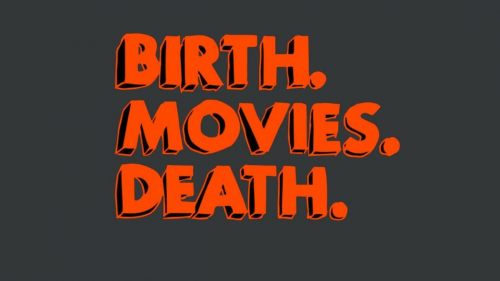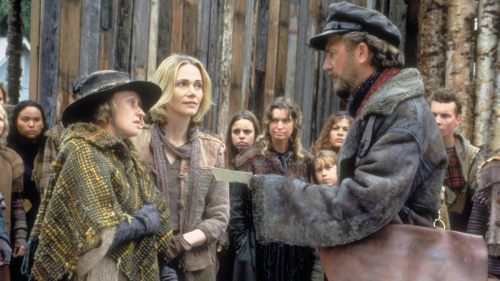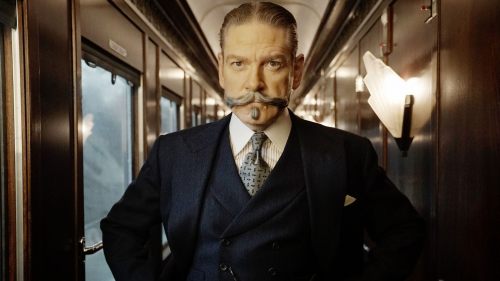The King Of The Adaptation: Kenneth Branagh’s Directorial Career From HENRY V To CINDERELLA
Depending on what side of the pop culture spectrum you fall on, you might know Kenneth Branagh -- actor/director/screenwriter/producer/performer/narrator/British knight -- from very different projects. The man has been involved with film in one way or another since 1981, when he had an uncredited role in Chariots Of Fire. (I wouldn’t suggest trying to spot him, however, unless you’re willing to sit in front of your viewing screen of choice searching the “Cambridge Society Day” crowd.)
In the more than three decades that have followed that first, tiny role, he’s tried what seems like nearly everything associated with the acting profession. In fact, he’s the first man to ever be nominated for an Academy Award in five different categories: Best Actor in a Leading Role (Henry V), Best Director (Henry V), Best Live Action Short Film (Swan Song), Best Adapted Screenplay (Hamlet) and Best Actor in a Supporting Role (My Week With Marilyn). It’s a cliché, but a fitting one: Branagh is most definitely a renaissance man, and one who likely doesn’t get a whole lot of sleep.
In 1989, Branagh made his directorial debut with Henry V, which was also the first of his many feature film adaptations of one of William Shakespeare’s plays. Henry V, the fourth of Shakespeare’s history plays, tells the story of King Henry V and the years surrounding the Battle of Agincourt. Although the adaptation stayed true to the heart of the play, stuck with Elizabethan English and was set in 15th century France, Branagh wasn’t content to stick completely to the source material. To make the film his own, he incorporated flashback scenes from Henry IV parts 1 and 2, and toned down any of the small comedic roles to make it a more serious affair. With Henry V, Branagh also showed his dedication to making the Bard’s work more accessible by dressing the narrator character of Chorus in modern-day clothes. The changes certainly worked in his favor: Henry V is lauded by many as one of the best Shakespearean adaptations of all time.
In 1991, Branagh got behind the director’s chair a second time for DEAD AGAIN, a quasi-film noir about a private detective and a woman with amnesia, and their past lives as a murdered pianist and her composer husband who was executed for the crime. The next year saw the release of Peter’s Friends, a semi-comedy about seven friends who were in an acting troupe in college who meet up after a decade apart to share memories and secrets.
Branagh’s fourth film, Much Ado About Nothing, opened in 1993. The film swung Branagh’s directorial focus back to Shakespeare, but this time to a comedy. Much Ado About Nothing is a complex story, involving mistaken identities, ruses, rumors and political intrigue, that all ends up working out well (for most of the characters) in the end. The adaptation stays true to the source material, but Branagh’s directing, and the cuts in content he chose to make, made it much more accessible to viewers.
In 1994, Mary Shelley’s Frankenstein hit theaters. Branagh, again, was extremely faithful to the film’s origins, the story of a doctor obsessed with cheating death who creates a man/monster out of various human parts. So faithful, in fact, that this adaptation is considered one of the most true to Shelley’s novel ever made.
Branagh returned once more to Shakespeare, in a manner of speaking, with 1995’s A Midwinter’s Tale. The romantic comedy tells the story of an out-of-work actor who volunteers to put on a production of Hamlet -- at Christmas -- to benefit his sister’s church. The play within the movie must have been at the forefront of Branagh’s mind, because a year later, his adaptation of Hamlet was released.
Branagh’s Hamlet, which clocks in at more than four hours long, is the first unabridged film adaptation of Shakespeare’s play, which tells the story of neurotic Prince Hamlet, his traitorous stepfather Claudius and his suicidal ex-girlfriend Ophelia. Even though he stuck with the original text and language, Branagh once again impressed his own style on The Bard, and updated the adaptation to be set in the Victorian era. (Also notable: Hamlet was the last picture to be filmed on 70mm film until 2012, when Paul Thomas Anderson filmed The Master.)
The turn of the millennium saw the release of Love’s Labour’s Lost, yet another Shakespearean adaptation, and the first film version of the comedy ever. It’s the least liked of any of Branagh’s Shakespearean endeavors, and the one that most deviates from the original source. (The play might be at fault, however, as Love’s Labour’s Lost is one of Shakespeare’s least popular plays.) The basic story is still there -- the story of four men who swear off all women and their eventual marriages to the four women who make them curse their vows -- but Branagh’s version is set in the 1930s … and is a musical.
The most recent of Branagh’s Shakespearean adaptations, As You Like It, opened in theaters in Europe in 2006, but went straight to HBO in the U.S. In the film, which follows heroine Rosalind on her quest to escape persecution (and find love), Branagh returns to his dedication to sticking closely to Shakespeare’s original plot and language, but sets the story in Japan in the late 1800s rather than medieval France.
2006 also saw the release of The Magic Flute, an English version of Mozart’s “singspiel” (a German musical drama/opera). The movie was released in conjunction with the 250th anniversary of Mozart’s birth and, although Branagh updated the setting to take place during World War I, is very close to the original (as is his custom), which tells the story of two lovers who must go through trials to be together.
In 2007, Sleuth, an adaptation of a play by Anthony Shaffer about a novelist and the unemployed author who ran off with his wife, opened, and didn’t do well in the eyes of critics. Branagh’s version of the film differs greatly from the play it is based on, and from the 1972 film of the same name.
Branagh’s career made a drastic shift toward the mainstream in 2011 with the release of Thor. The movie tells the story of Marvel comic superhero and Asgardian god Thor’s exile from his home realm. When Branagh was chosen to direct the comic adaptation, no one could quite believe it, considering his previous, far more serious output. But the reception was ultimately good.
2014 saw the release of another Branagh-directed big-budget film adaptation, Jack Ryan: Shadow Recruit, which is (loosely) based on the novels written by Tom Clancy about CIA analyst/all around badass Jack Ryan. The film, though not well-received, continued Branagh’s trajectory away from high-brow film adaptations of theatre productions and into Hollywood tentpole territory.
Today marks the release of Cinderella, Branagh’s 14th feature film. At first glance, this big-budget, major studio production might seem like a marked departure from his typical projects (until 2011, at least). With its grand sets and stunning costumes, it promises to be his most visually decadent project yet. But when you think about it, the match makes complete sense. The movie is an adaptation of the 1950s cartoon, which was an adaptation of the classic fairy tale. And there’s really nothing Branagh loves more, or does better, than adapting a classic tale for the enjoyment of the masses.
This was originally published in the March issue of Birth.Movies.Death. See Cinderella at the Alamo Drafthouse starting today!



